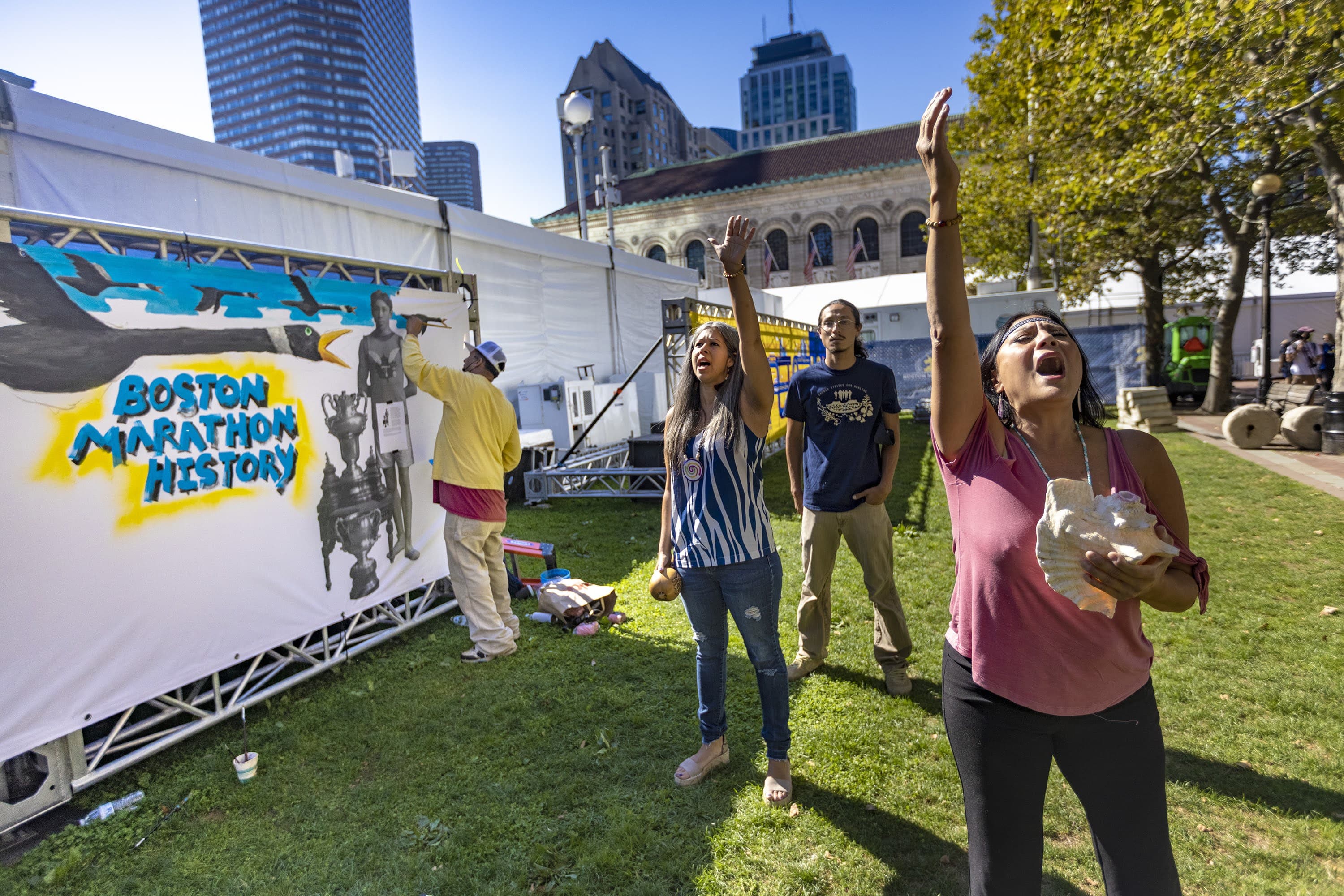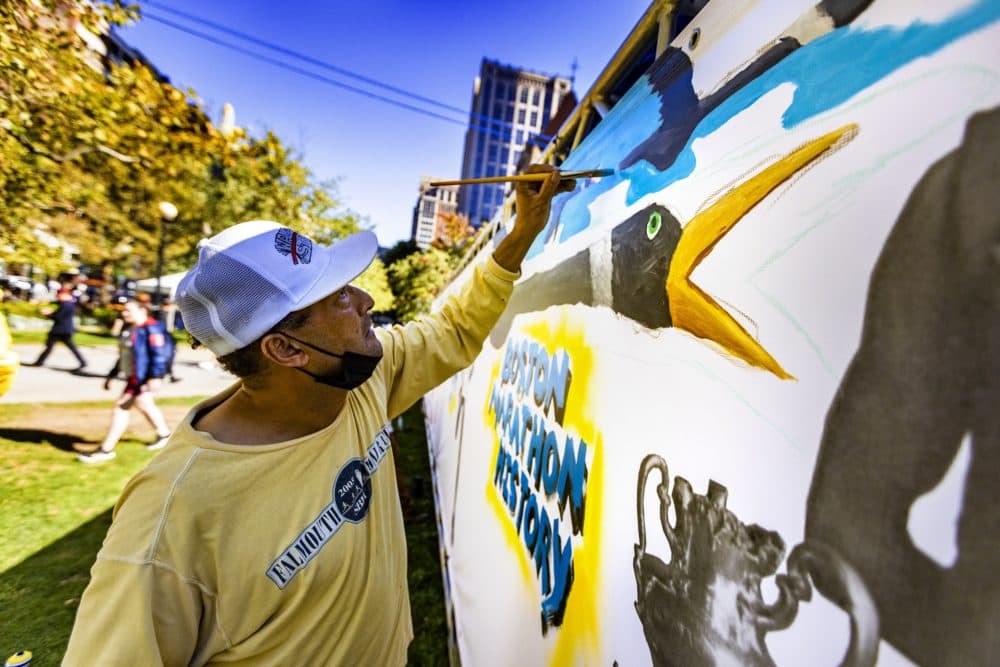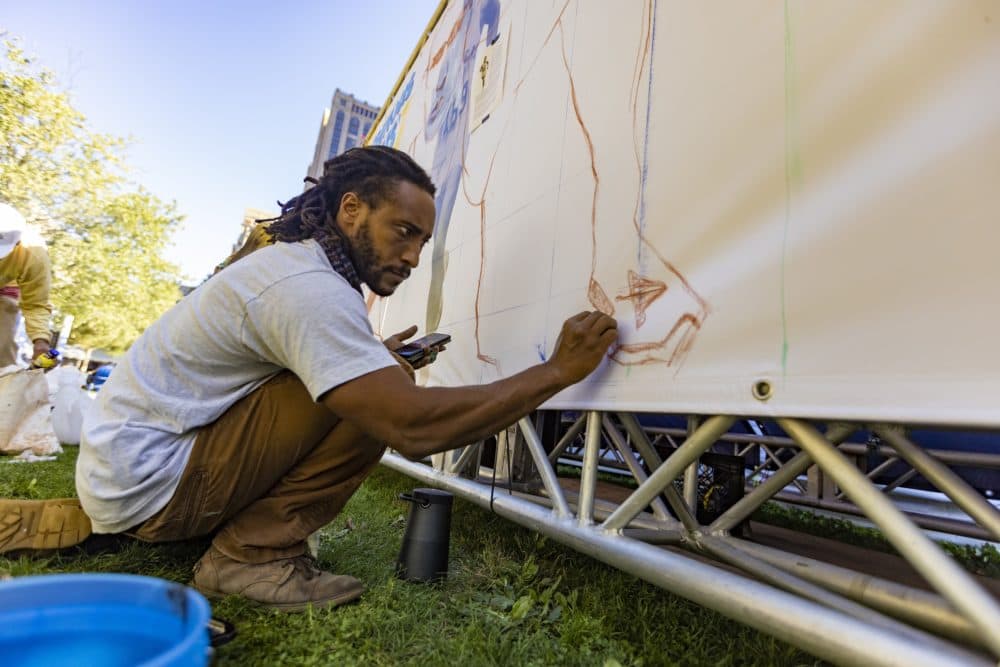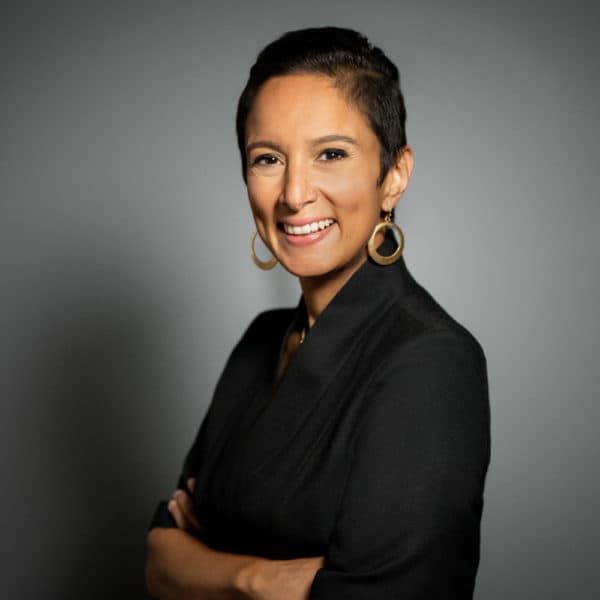Advertisement
Indigenous Peoples' Day Newton Committee sees 'huge symbolism' in rescheduled Boston Marathon

The Boston Athletic Association decided to postpone this year's Boston Marathon from April to October due to the pandemic. But the date they chose — Oct. 11 — is also Indigenous Peoples' Day in Newton and Boston, which are along the marathon route.
The BAA apologized for scheduling the marathon on a day that's important to many and are honoring the late Ellison "Tarzan" Brown, a member of Rhode Island's Narragansett tribe who won the race twice in the 1930s and inspired the name “Heartbreak Hill” to describe the most iconic — and dreaded — section of the course.
Indigenous Peoples' Day Newton Committee members Chali’Naru Dones and Darlene Flores join WBUR's Rupa Shenoy to reflect on the process leading up to this year's re-scheduled marathon.
Highlights from this interview have been lightly edited for clarity.
Interview Highlights
On how the Indigenous Peoples' Day Newton Committee got started
Chali’Naru Dones: Darlene and I, we got together and along with other city officials, along with other Newton residents and Natives, Indigenous residents, Indigenous peoples from all over, to write letters, send them into the city and testimonies during the hearing. So, yeah, it was definitely a fight. It wasn't easy. It's been something that's been going on for several years.
On the committee's reaction to the Boston Athletic Association rescheduling this year's marathon to Indigenous Peoples' Day
Darlene Flores: We were like, "Why are you having this on the same day? Some people now are going to be split on wanting to attend the Boston Marathon or participate in the Boston Marathon instead of ... supporting an Indigenous event." Especially when the city of Newton [was] in the beginning saying that they could not support the two events. So they basically said, "Sorry, the Boston Marathon supersedes Indigenous Peoples' Day. Have your event on a different day." And so that's when a call was made to say, "You guys have to unite, get together a working group ... so they actually understand that we are united on this and we're not just a small minority, we're not just a thing of the past."


On the symbolism of the marathon falling on Indigenous Peoples' Day and potentially overshadowing efforts to call attention to colonialism
Chali’Naru Dones: Huge symbolism. We were getting together so that we can have a ceremonial celebration in gratitude, in mourning to remember our ancestors.
Darlene Flores: Yeah, a lot of people ... purposely leave us out of the history books, and it is based on a Eurocentric agenda, that civilization started after the European invasion. And that's not true.
On the BAA apologizing and taking steps to recognize Indigenous Peoples' Day, including an acknowledgment that the race is run on what was once Indigenous land
Chali’Naru Dones: Yes, they did do a public apology. But it started with the Indigenous Peoples' Day Newton Committee to get this happening so all Indigenous peoples from everywhere are acknowledged, recognized, honored and respected.
Darlene Flores: I think that the BAA has definitely opened up, and they really understand the importance of not only doing a land acknowledgment on Indigenous Peoples' Day, but a land acknowledgment every single time that they run on Indigenous land, because they are running on Indigenous land. And that's huge, you know? We suggested that they have an Indigenous person on their board. To help prevent ... stuff like this from happening in ... the future. Could they have done more? Could they still do more? Absolutely.

On Ellison "Tarzan" Brown, the Narragansett tribe member who won the marathon twice — including in 1936, when he overtook a white runner from Arlington named John Kelley on what became known as "Heartbreak Hill"
Darlene Flores: Heartbreak Hill is not this huge hill that people are running in the marathon, and it's a huge hill — no, that's not the situation. Heartbreak Hill is named "Heartbreak Hill" because when Kelley was passing by Ellison "Tarzan" Brown here, right in this area, he kind of ... tapped him on the back like, "Ha ha ha ... I'm passing you by." And I guess that just gave "Tarzan" Ellison Brown the energy to say, "Oh yeah? That's not happening." And what he did is he literally ran past him and won first place. So Kelley came in [fifth].
So what do they do here in Newton? They put up a statue of the [fifth]-place winner. They didn't put up a statue of Ellison Brown, the first-place winner. And that to me is like, really? Like, that's a smack in the face. Nobody knows what Heartbreak Hill is. Heartbreak Hill is when a white man got his heart broken, and that's a shame. And there's a lot of talk of, how do we fix that? You know, the narrative. How do we ... make someone who won first place seen? ... So there's a lot of work that needs to be done. And we're here to do the work.
Correction: John Kelley came in 5th place in 1936. He won the previous year and participated in 61 Boston Marathons over his lifetime. The post has been updated. We regret the error.
This article was originally published on October 11, 2021.
This segment aired on October 11, 2021.
